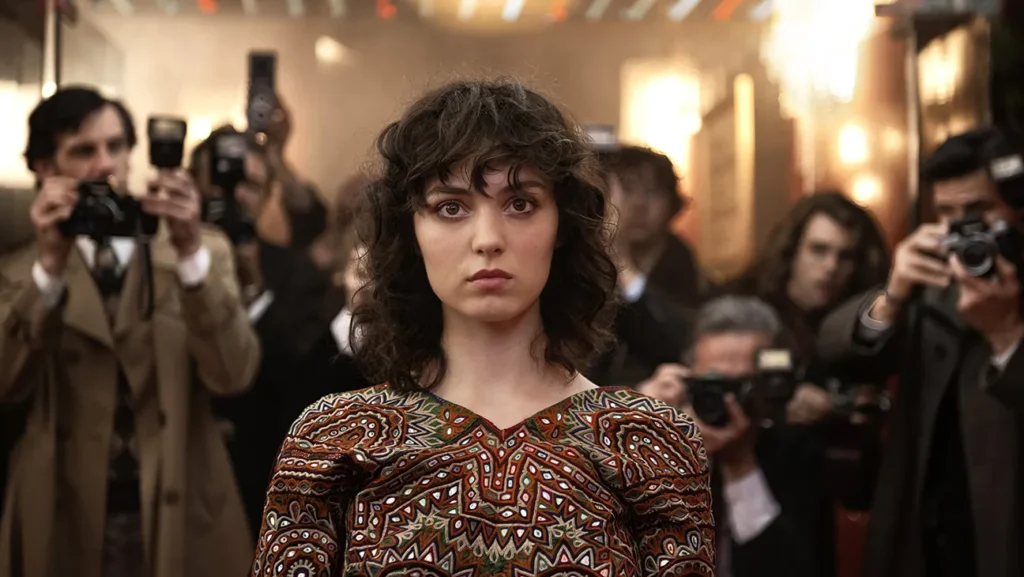Bernardo Bertolucci (Giuseppe Maggio) stares at Maria Schneider (Anamaria Vartolomei). “There’s something wounded about you that I like,” he tells her, neither knowing nor caring that some of the most grievous physical and psychological scars she endures will be inflicted by him.
A harrowing chapter in the annals of auteur-sanctioned tyranny, the sexual abuse that Maria Schneider survived on the set of Bertolucci’s “Last Tango in Paris” (1972) is recreated in “Being Maria,” Jessica Palud’s film adaptation of a 2023 memoir written by Schneider’s cousin, Vanessa, and translated by Molly Ringwald (!).
“You’re like a blank page,” Bernardo tells Maria when they first meet. “Being Maria” fills that page not only with the trauma of “Last Tango,” but with Schneider’s existence beyond it, which Palud chronicles with beguiling dreaminess and chilling directness.
While most biographical movies are infected with momentousness, “Being Maria” is a lithe series of vignettes. Soon after Maria glimpses Marlon Brando (Matt Dillon)—seen from a distance, swatting at a swarm of paparazzi—they’re sweating through “Last Tango” together, experiencing an intimacy eerie in its suddenness.
“I hated the truth even more,” Marlon admits as he comes to terms with the vulnerability the film demands. His own insecurities deepen our horror as he assaults Maria on camera, deploying a stick of butter in an infamous manner vile enough to make even the most steadfast omnivore go vegan.
True to Schneider’s recollection of events, “Being Maria” presents Brando as an instrument of Bertolucci’s artless sadism. It’s a just representation in light of Bertolucci’s 2016 statement on the matter, which seemed to deny only the charge that his mistreatment of Schneider was artistically unnecessary.
“I don’t know that man,” Maria declares in “Being Maria” when asked about Bernardo. That’s Palud’s point: The simplicity of his cruelty means there’s not much to know.
With an eye for the absurd, Palud shows us how contradictory reactions to “Last Tango” swirl around Maria—from the women who ignorantly condemn her (“You put women to shame”), but also the men who jovially fetishize her (“Pass the butter”).
“That’s my fan club,” Maria says ruefully. Devoid of allies, she succumbs to self-hatred, plus a craving for heroin (incidentally, is it too much to ask directors to stop filming syringes penetrating bare skin in close-ups?).
“Being Maria” is warmed by the arrival of Noor (Celeste Brunnquell), a production assistant who becomes Maria’s lover. At once tender and hopeless, their romance is succinctly encapsulated by a surreal scene at a dance club, captured with baleful beauty by cinematographer Sébastien Buchmann.
Watched by Noor, Maria dances, drenched in emerald light. Then, just as Noor looks the other way, Maria vanishes into a crowd of revelers, crumpling to the floor as her addiction takes its toll. It’s a new spin on an old thought experiment: If a woman falls in the spotlight and no one is watching, is she visible?
“I’m not a showoff anymore,” Maria says meekly as she leaves a voicemail for her abusive mother (Marie Gillain) during a stint in rehab. The response that follows reflects many of the narratives Maria Schneider was drafted into, both onscreen and off: Her call is never returned.



